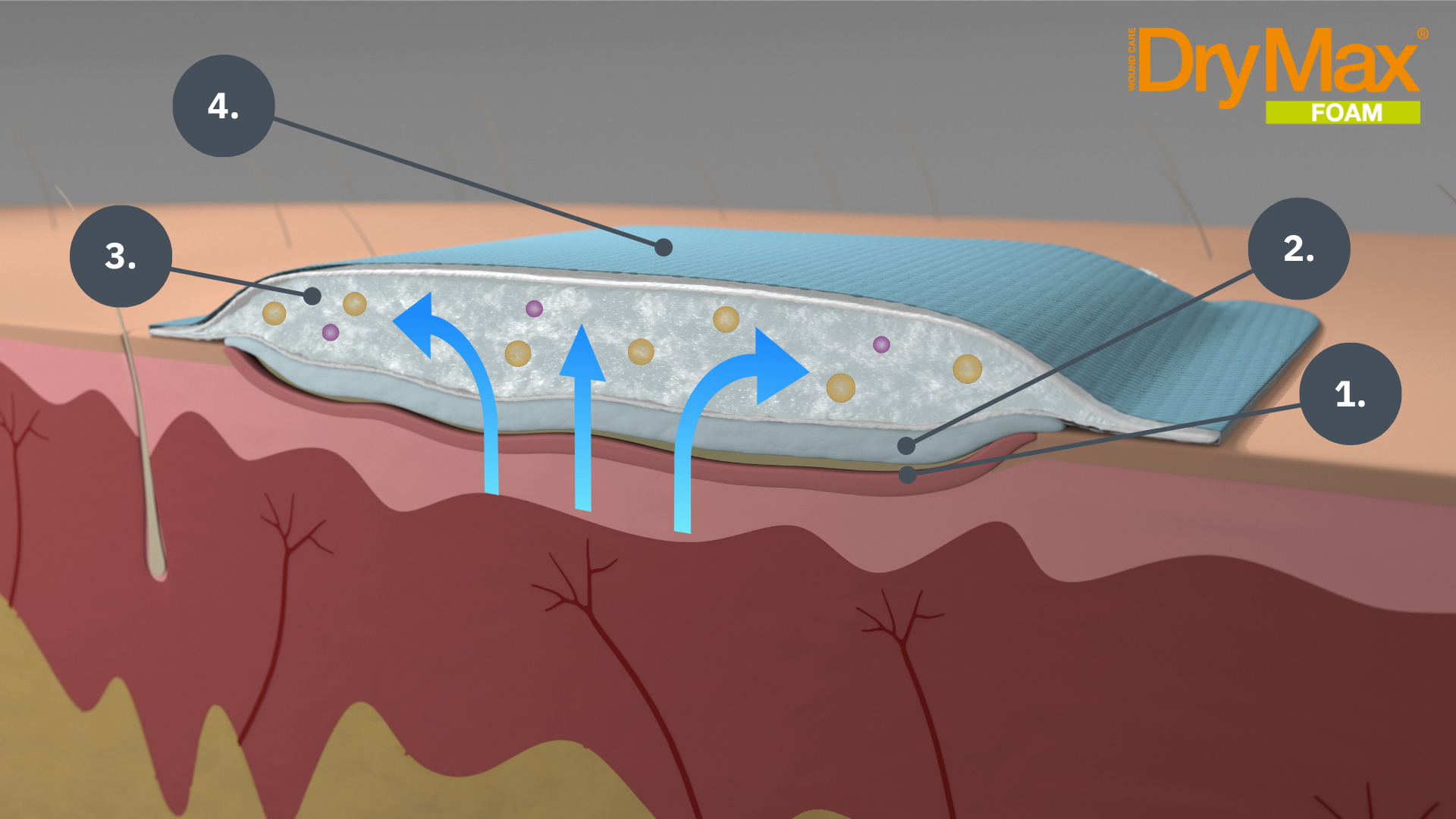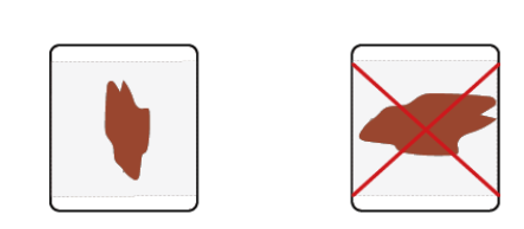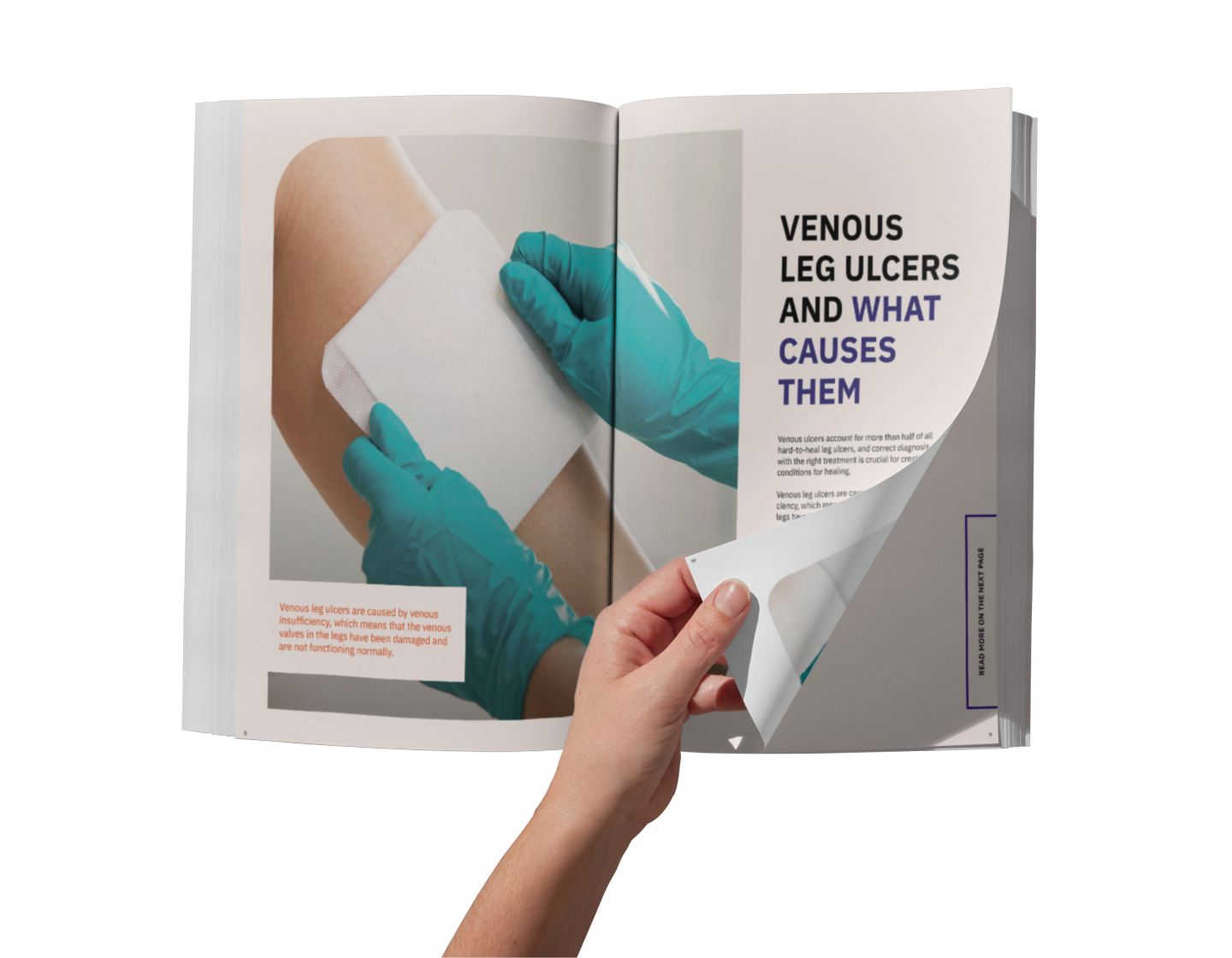Traditional foam dressings are made from polyurethane foam. They are often used on exuding wounds, such as in treating venous leg ulcers. They are soft, pliable, and comfortable against the skin. However, a disadvantage of the dressings is that they cannot retain the fluid they absorb inside the dressing. The fluid leaks back into the wound and onto the surrounding skin, which becomes wet, spongy, and loose.
When this situation is likely to occur, an alternative that can lock and retain the wound fluid inside the dressing should be chosen instead. This is what we technically refer to as retention properties. A traditional foam dressing can be compared to how a dishcloth works. It can absorb liquid, but if you squeeze it, it runs out. Similarly, leakage can occur when a foam dressing is used under compression wrapping and pressurised.
The key to retention is that it encapsulates and retains the fluid in the dressing.
As a clinician, spending a lot of time in your often already busy schedule on recurrent dressing changes with poor wound healing results can be frustrating. If things go wrong, it can become a bit of a long-drawn-out vicious circle. The consequences for patients can also be troublesome when wound fluid leaks through dressings, wraps, and clothing.
In addition to the properties of the traditional foam dressing, Absorbest Super Foam, our foam dressing with superabsorbents, has a good retention capacity. This means the dressing can encapsulate and retain wound fluid under pressure during compression therapy. With the use of superabsorbent technology, the foam dressing has the ability to lock-in wound fluids for better control. This makes achieving the proper moisture balance in the wound easier and improves the chances of successful treatment.
1. Wound contact layer with adhesion
2. Foam material

3. Absorbent core
4. Blue backing
Tip!
How to choose the size of the dressing according to the size of the wound
Choose a dressing that fits properly to prevent unnecessary leakage. A general rule is to leave a 2-centimetre margin between the wound and the dressing’s edge.


What are the characteristics of different leg ulcers, and how can we promote the healing of problematic ulcers? Treatment measures, phases of healing, cleaning, and appropriate dressings. Our complete guide to leg ulcers focuses primarily on venous ulcers, from cause and origin to the healing process and aftercare.